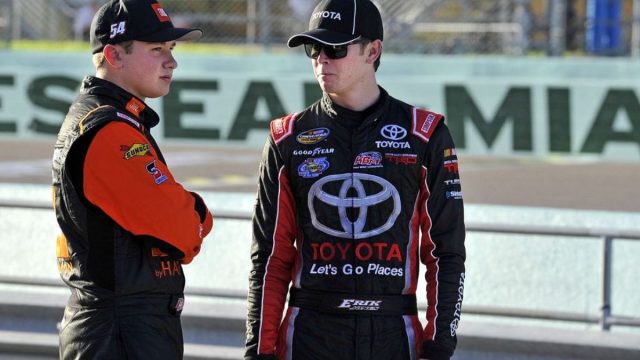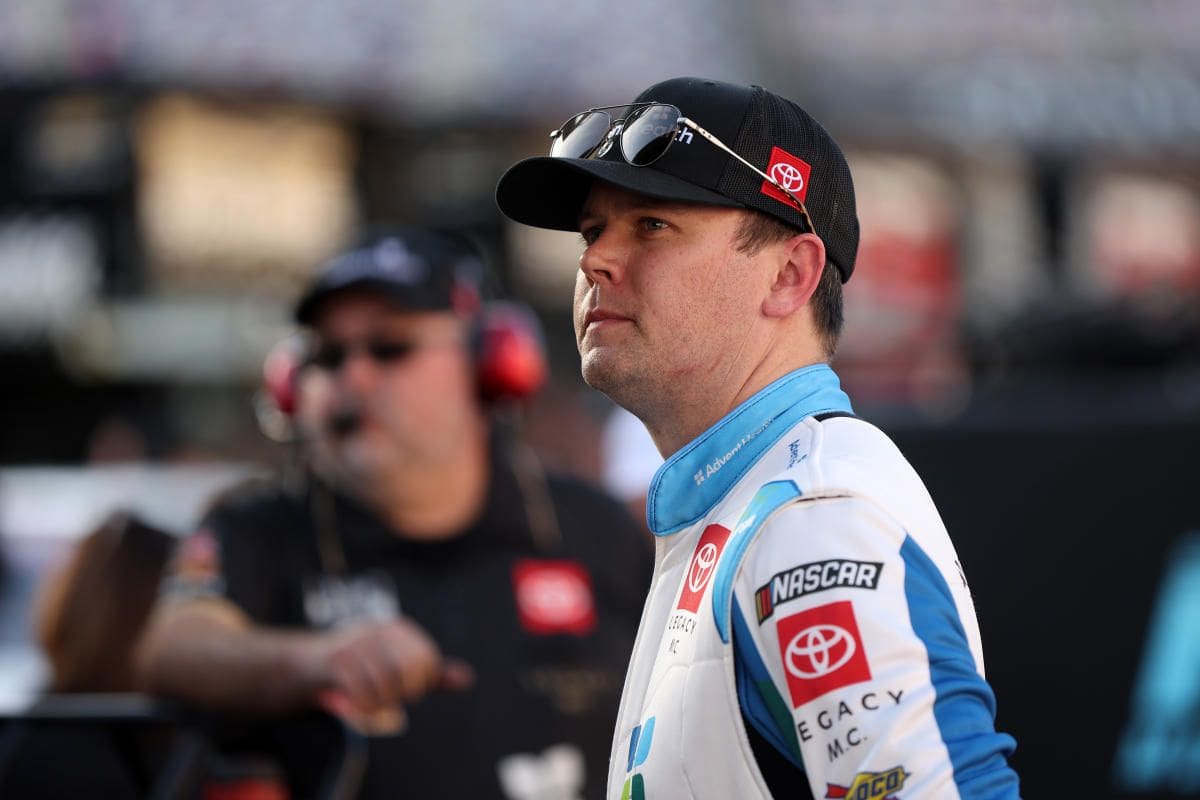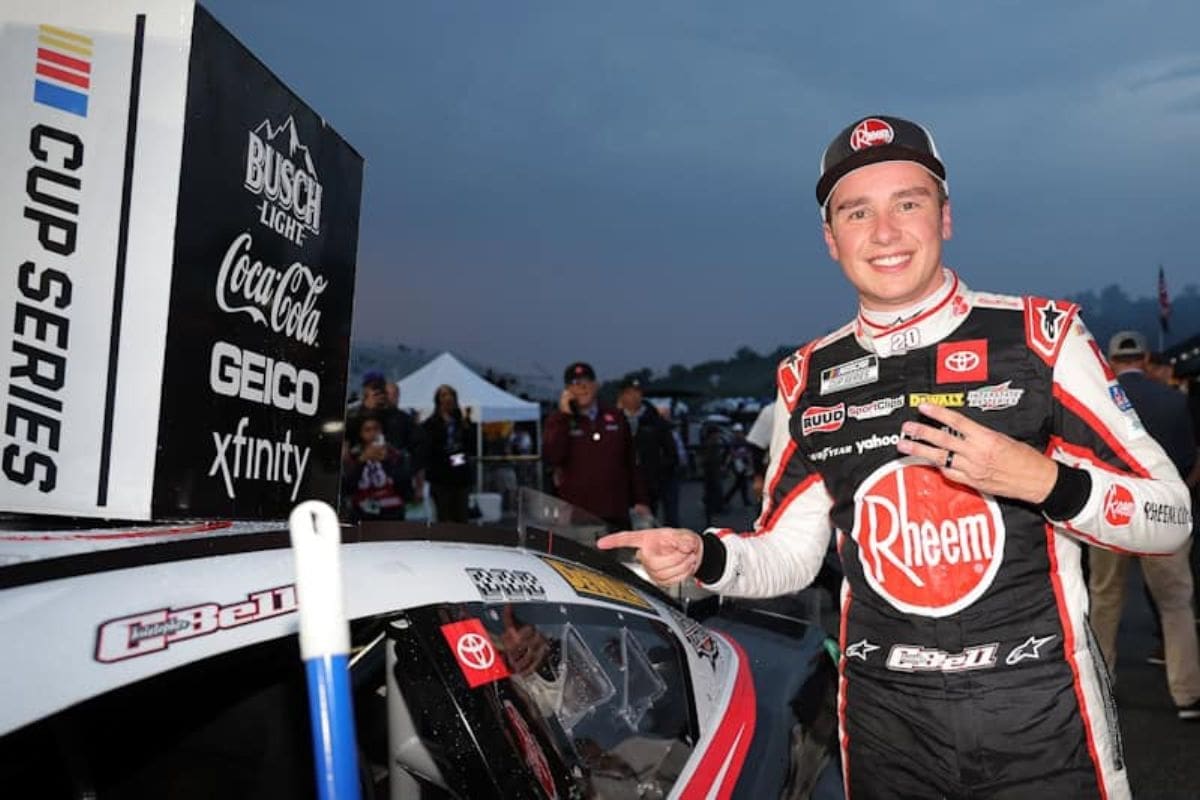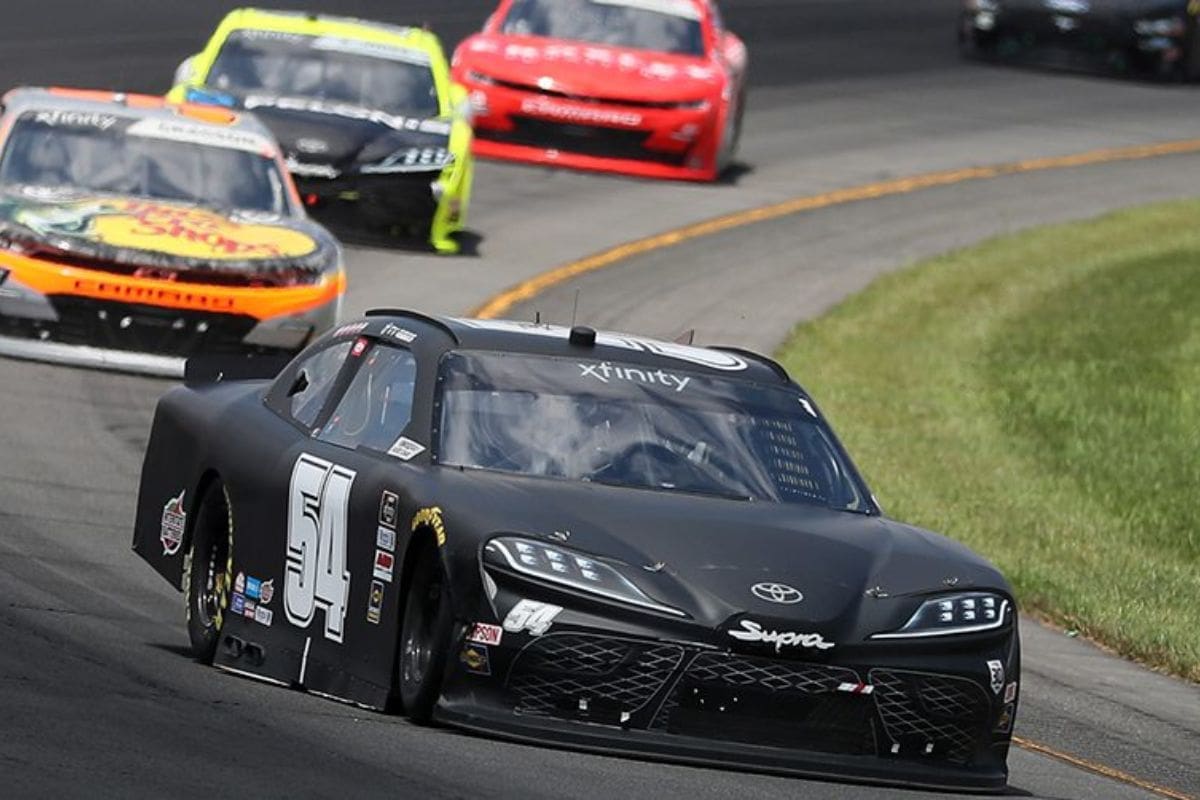Erik Jones Collision With Christopher Bell: The collision between Erik Jones and Christopher Bell after Stage 1 not only resulted in immediate damage assessments but also highlighted the complexities of pit road strategy in NASCAR. As both drivers confronted the ramifications of their encounter, the ensuing chaos revealed how quickly a race can pivot from tactical execution to survival mode. The implications of this incident extend beyond mere lap times; it threatens their championship aspirations and raises questions about pit crew efficiency under strain. What strategies will emerge from this turmoil, and how might these events reshape the narrative of the season?
Key Highlights
- Erik Jones’s collision with Christopher Bell after Stage 1 caused significant disruption and chaos on pit road.
- The incident left Jones’s car positioned sideways, complicating pit crew operations and coordination.
- Both drivers faced damage assessments that raised concerns about handling and performance for the remainder of the race.
- The collision highlighted the high-stakes environment of NASCAR and the critical nature of pit stop strategy.
Eventful Pit Stop After Stage 1
The chaotic aftermath of Stage 1’s finale illuminated the nature of pit road dynamics, as Erik Jones found himself in a challenging position following an unexpected collision with Christopher Bell, who had just secured the stage victory. The incident not only disrupted Jones’s momentum but also exemplified the high-stakes environment of NASCAR, where split-instant decisions can yield considerable repercussions.
As Jones approached his pit stall, the impact of Bell’s action left his car sideways, creating a scenario ripe for complications. The positioning of his vehicle, with the nose angled perilously toward the pit wall, presented an immediate logistical challenge for his pit crew. This situation demanded not just speed but also exceptional coordination and communication among the crew members. Each moment lost on pit road translates directly into lost positions on the track, making the urgency palpable.
Careful, Christopher! 🫣 pic.twitter.com/C07yIA2NKY
— NASCAR (@NASCAR) August 11, 2024
The pit crew’s ability to adapt under such strain emphasized the critical importance of training and preparedness in the sport. They had to execute their tasks with remarkable precision—changing tires, refueling, and making adjustments—all while contending with the instability of the car’s position.
This incident is a striking reminder that pit stops are not merely a mechanical necessity but a tactical battleground where the outcomes of races can pivot dramatically. In this instance, Jones’s crew faced the dual challenge of mitigating damage from the collision while racing against the clock to keep their driver competitive.
Christopher Bell’s Damage
While Erik Jones grappled with the consequences of his collision, Christopher Bell also faced considerable damage that could jeopardize his strong performance early in the Richmond race. The incident occurred during a vital phase of the race when both drivers were executing their pit strategies. Bell had already completed his pit stop and was re-entering the fray when Jones’s ill-timed action disrupted the flow, resulting in a notable impact.
The damage Bell sustained was not merely cosmetic; it threatened to affect the car’s aerodynamics and handling, essential elements for competitiveness on the Richmond track. Though he was able to communicate with his team post-collision, remarking on the unexpected excitement of the situation, this was likely a facade masking the gravity of the circumstances. The timing of the collision could not have been worse for Bell, who was enjoying a favorable position in the race up until that point.
Analysis of the incident reveals that Bell’s car, a key player in early laps, may suffer from performance degradation due to potential issues with suspension alignment or tire wear resulting from the impact. Such damage could undermine his ability to maintain pace and defend positions against competitors.
Consequences of the Incident
Consequences of the incident extend beyond mere pit stop chaos, as both Erik Jones and Christopher Bell must navigate the complexities of damage assessment and potential performance setbacks that could alter the path of their races. The ramifications are multifaceted, affecting not only individual performance but also the broader tactics of their teams.
- Damage Assessment: Both drivers must evaluate the extent of the damage to their vehicles and the implications for handling and speed.
- Points Standings: With Jones struggling to breach the top-25 and Bell potentially facing more severe damage, their positions in the championship standings could be adversely affected.
- Team Tactics: The pit stop confusion introduces tactical dilemmas, compelling teams to make swift decisions that could influence tire selection and pit timing.
- Psychological Impact: The incident may affect the mental fortitude of both drivers, as they grapple with the stress of recovery in a highly competitive environment.
For Jones, the challenge lies in overcoming mechanical setbacks while attempting to improve his race standings. Conversely, Bell’s situation is precarious; if the damage is substantial, his team must devise an effective plan to mitigate further losses.
The introduction of prime and option tires at Richmond adds an extra layer of complexity, as both drivers must adapt their racing strategies under these new conditions. Ultimately, the incident serves as a critical point, testing the resilience and adaptability of both drivers and their respective teams.
Stage 1 Overview
Following an incident that disrupted the flow of the race, Stage 1 unfolded with Christopher Bell asserting his dominance as he seized the lead from teammate Denny Hamlin, showcasing the strength of Joe Gibbs Racing as they occupied the top three positions.
Bell’s command of the race was evident as he maintained a comfortable lead, capitalizing on his teammate’s early efforts to create a strong tactical advantage.
Throughout the stage, the absence of the red ‘option’ tires meant that all competitors raced on a level playing field, contributing to a remarkably clean and uneventful stage. As the laps progressed, the consistency displayed by Bell, Hamlin, and Martin Truex Jr. highlighted the effectiveness of their setups and teamwork, a hallmark of Joe Gibbs Racing’s success.
Despite the relatively uneventful racing, the stage was not without its challenges for other drivers. Several competitors encountered difficulties and lost valuable positions, yet the lack of green flag pit stops kept the racing order largely intact.
The stage concluded without major incidents, aside from the collision between Bell and Erik Jones during the pit stop, which would later prove crucial in the narrative of the race.
As Stage 1 closed, it was evident that while Bell thrived, the ramifications of the pit stop chaos hinted at a more complicated race ahead, setting the stage for a dramatic and multifaceted competition. The contrast between Bell’s dominance and Jones’s struggles created a compelling dynamic to watch as the race evolved.
News in Brief: Erik Jones Collision With Christopher Bell
The collision between Erik Jones and Christopher Bell exemplifies the unpredictable nature of NASCAR racing, where individual incidents can precipitate broader logistical challenges.
The urgent need for damage assessments during the pit stop not only affected both drivers’ immediate performance but also carried considerable implications for their championship aspirations.
Such events underline the critical interplay between driver strategy and team execution, showing how a single moment on the track can reverberate throughout the entire racing season.
ALSO READ: Erik Jones’ NASCAR Future in Doubt: Bob Pockrass Highlights Contract Concerns



